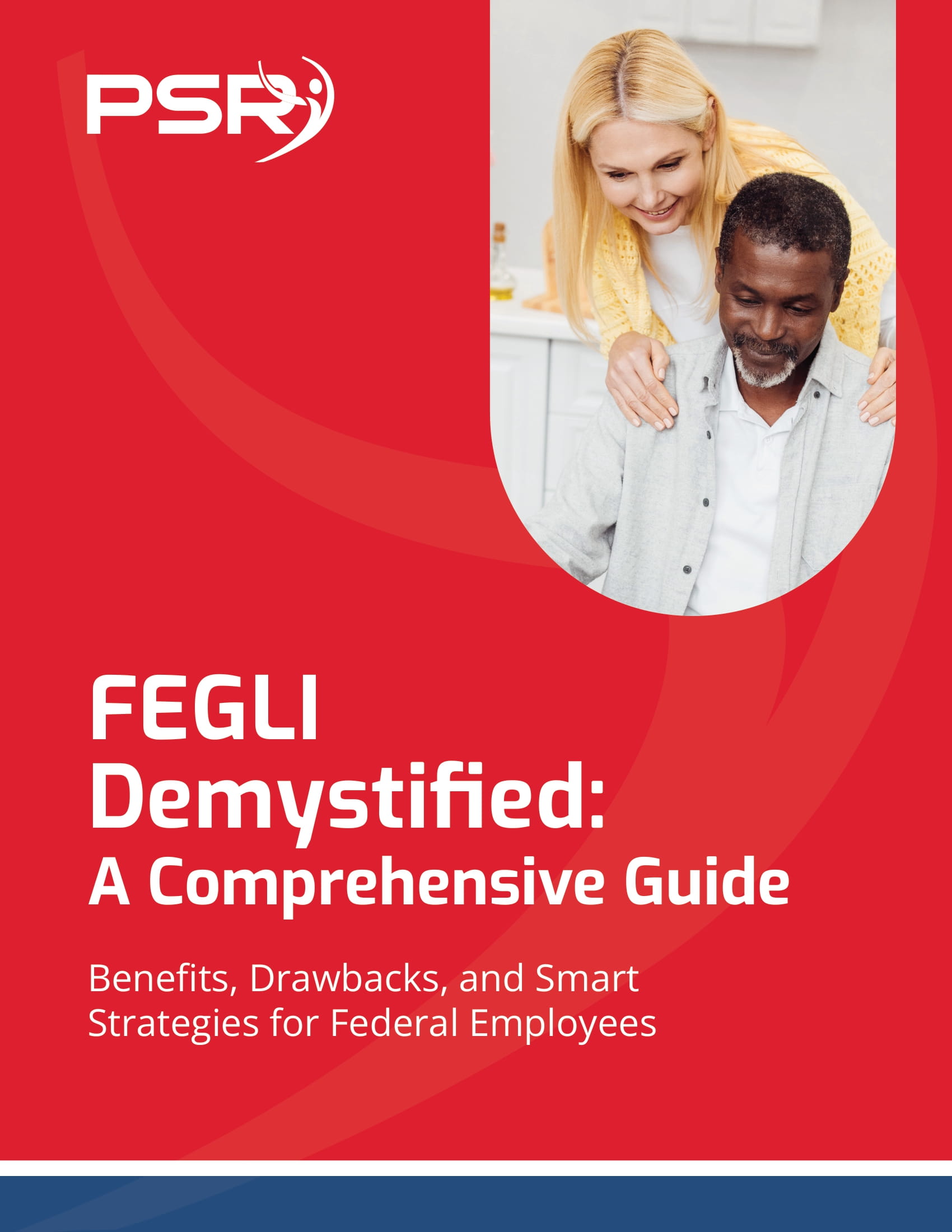Key Takeaways
-
FEGLI premiums can increase dramatically in retirement, especially after age 65.
-
You can avoid overpaying by reviewing your coverage options before and after retirement.
Understanding the Structure of FEGLI
The Federal Employees’ Group Life Insurance (FEGLI) program provides term life insurance to federal employees and retirees. It includes Basic coverage, which is automatically provided unless waived, and several optional coverages that can be elected for additional protection.
Here’s a breakdown of the FEGLI structure:
-
Basic Insurance: Generally equal to your final annual salary, rounded up to the next $1,000, plus $2,000.
-
Option A (Standard): Provides $10,000 of additional coverage.
- Also Read: How Survivor Benefits Provide Federal Families with Stability After the Loss of a Loved One
- Also Read: Federal Employees, Here’s What You Need to Know About Survivor Benefits Before Retiring
- Also Read: Medicare Enrollment Changes That Every Federal Employee Needs to Pay Attention to This Year
-
Option B (Additional): Offers coverage from one to five times your final salary.
-
Option C (Family): Covers your spouse and eligible children, with units of coverage up to five multiples.
While these options are helpful during your career, the costs in retirement can look very different—and not always in your favor.
Why FEGLI Gets Expensive After You Retire
During your working years, the government pays a portion of your Basic coverage premium, but that changes after retirement. Here’s what shifts:
-
No government contribution: Once retired, you’re responsible for the full cost of any continued FEGLI coverage.
-
Age-based increases: Option B and Option C premiums rise in five-year age bands starting at age 50. The increases can be steep, especially after age 65.
-
Basic coverage changes: You can choose to keep 100% of your Basic coverage, reduce it to 50%, or let it gradually reduce to 25%. Each choice has cost implications.
By age 70, many retirees find themselves paying significantly more than they expected, especially if they kept high multiples under Option B.
Your Choices at Retirement: What You Need to Decide
At retirement, you face several decisions that can impact your long-term costs. You’ll need to elect your post-retirement coverage for each part of your FEGLI plan. Consider the following:
1. Basic Insurance
You can choose one of the following reduction options for Basic coverage:
-
75% Reduction: Your coverage decreases by 2% per month starting at age 65 until it reaches 25% of the original value. No premium is charged after age 65.
-
50% Reduction: Your coverage drops to 50% over time. Premiums are lower than full coverage but do not stop.
-
No Reduction: Your full Basic coverage stays in place for life, but you continue paying premiums even after age 65.
2. Option A
This $10,000 benefit follows a standard reduction schedule. It reduces to $2,500 over time, and no premiums are required after age 65. You can cancel it if the reduced amount doesn’t serve your needs.
3. Option B and Option C
You must decide whether to:
-
Continue coverage with full reductions (gradual decrease to zero after age 65)
-
Continue coverage with no reductions (keeps full value but premiums continue and increase)
-
Cancel the coverage entirely
The decision you make becomes permanent. So it’s important to weigh the pros and cons carefully.
The True Cost of Keeping Full Coverage
If you choose not to reduce your FEGLI coverage after retirement, you might be surprised by the cost. Premiums for Option B and C increase every five years and accelerate as you get older.
For example:
-
From ages 65 to 70, the cost per $1,000 of Option B coverage may triple compared to what you paid at age 60.
-
After age 70, those costs increase even more rapidly.
This structure means retirees holding on to large Option B multiples could end up paying thousands of dollars annually. Many are unaware until they start receiving pension payments and notice the deductions.
Questions to Ask Before You Finalize Your FEGLI Choices
To avoid overpaying in the long run, ask yourself these key questions:
-
How much life insurance do I really need in retirement?
-
Are my dependents still financially reliant on me?
-
Do I have other sources of coverage, such as a private life insurance policy?
-
Am I relying on FEGLI as a final expense policy, or do I have other savings to cover funeral costs?
-
Would reducing or cancelling FEGLI allow me to reallocate funds toward medical or long-term care coverage?
Answering these questions early—ideally at least a year before retirement—can help you avoid costly surprises.
When to Start Evaluating Your FEGLI Strategy
The best time to start reviewing your FEGLI elections is 12 to 18 months before your planned retirement date. This gives you time to:
-
Compare the cost of keeping FEGLI coverage versus alternative coverage.
-
Review your retirement budget and adjust based on projected premiums.
-
Explore if other insurance policies might better fit your needs.
By age 64, it’s especially important to finalize your decisions, since FEGLI changes are generally locked in once retirement paperwork is submitted.
Alternatives to Consider if FEGLI Becomes Too Costly
If FEGLI’s rising premiums no longer make sense, there are options to consider. These alternatives might offer better value depending on your age and health:
-
Private life insurance: Depending on your health status, a term or permanent policy might offer more stable premiums.
-
Final expense policies: If your main concern is funeral and burial costs, consider specialized policies with smaller benefits.
-
Using savings: If you have adequate retirement savings, you might decide you no longer need life insurance.
-
Spousal coverage: Your spouse might have a plan through their own employer or pension system that you can rely on instead.
Just make sure to compare long-term costs and benefits carefully.
Common Missteps That Lead to Overpaying
Some of the most common mistakes retirees make include:
-
Automatically continuing the same coverage they had as employees without reviewing cost implications.
-
Failing to reduce Option B coverage despite having no financial dependents.
-
Not understanding that Option B and C premiums rise steeply after 65.
-
Assuming FEGLI is the most affordable option without shopping around.
Avoiding these pitfalls requires some proactive planning and financial awareness.
Reviewing FEGLI Annually Post-Retirement
Even after you retire, it’s smart to revisit your FEGLI elections each year. While you can’t increase coverage, you can always cancel or reduce it. Doing so might save you hundreds or even thousands of dollars over time.
You should:
-
Review your needs annually
-
Compare premium deductions on your retirement annuity
-
Evaluate whether your current FEGLI setup still makes sense
It’s a simple step that can lead to major savings.
How to Make Informed FEGLI Decisions in 2025
In 2025, the cost structure remains unchanged for the most part, but inflation, rising healthcare expenses, and life expectancy trends all contribute to the financial pressure retirees feel. This makes it more important than ever to evaluate whether you’re overinsured or simply overpaying.
Talk with a licensed financial professional who understands public sector retirement. They can walk you through the math, help you assess your personal needs, and suggest alternatives.
You can also request your FEGLI cost estimates from your agency’s HR office or retirement services center.
Taking Control of Your Post-Retirement Life Insurance Costs
FEGLI offers flexibility, but it comes at a cost. If you’re not careful, you could end up paying for coverage you no longer need—or worse, coverage you can’t afford to keep.
Start planning early, know your options, and consider what truly serves your needs in retirement.
For help with making the right FEGLI decisions, speak with a licensed agent listed on this website who can guide you based on your personal retirement goals.









